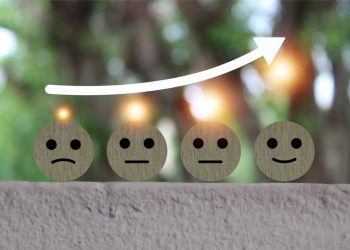 By Paul Wenske
By Paul Wenske
RISMEDIA, June 30, 2008-(MCT)-Jon Zehnder, 54, of Kansas City, MO, knows he’s a curiosity because, as his bumper sticker says, “I drive 55.” “I like to drive fast, but I’m old enough to remember the energy crisis in the 1970s,” said Zehnder, a social worker who lives in Lindsborg, Kan. “And,” he added with a laugh, “I’m saving a butt load on gas.”
But even in a time of $4-a-gallon gas, the slow lane is lonely these days.
For all the griping about spiking gas prices, there’s no clamor for the return of the little-lamented 55 mph speed limit of the ’70s and ’80s-though most agree it reduces consumption and saves money.
“It’s not that people haven’t thought of it-just no one is even close to discussing implementing it,” said Therese Langer, speaking for the American Council for an Energy Efficient Economy. “It’s not high on anyone’s list.”
The U.S. Department of Energy estimates that the cost of driving rises faster above 60 mph-adding nearly 20 cents per gallon for each additional 5 mph. The Alliance to Save Energy in Washington estimates that restricting speeds to 55 mph could reduce the use of oil imported from the Persian Gulf by up to 20% a day.
Even so, “there doesn’t appear to be any eagerness on Capitol Hill to revisit the issue,” said Ronnie Kweller of the alliance.
No, indeed. Paul Hesse, a spokesman for the U.S. Energy Information Administration, said his agency willingly would analyze the value of a 55 mph speed limit if asked by a member of Congress. No one has asked.
In truth, the situation today is different, said Mike Right, spokesman for AAA. In the 1970s the crisis turned on shortages caused by the oil embargo and turbulence in Iran. Today, there are no shortages. Instead, Asian demand is causing prices to skyrocket.
“Back in the ’70s people were fearful they would get to a strange area, there wouldn’t be any gas, and they’d be stranded,” Right said. In contrast, today, higher prices seem more an irritant to commuters with busy lifestyles who want to arrive at work or play as fast as their wheels can take them.
“I don’t think the public is ready for those kinds of regulations imposed on their daily lives today,” Right said.
In the 1970s, life was slower. There were fewer interstates. In metro areas, people lived closer in, and most didn’t care if their cars got only 14 miles to the gallon. After all, gas cost less than 40 cents a gallon.
But then the Arab-Israeli conflict triggered the Arab oil embargo. World crude prices quadrupled (to $12 a barrel). Gas at the pump shot up to 55 cents per gallon.
When the shortages occurred, the government contributed to the long lines at the pump by reallocating supplies.
“That created a lot of problems,” said American Petroleum Institute economist Ron Planting. “It’s very hard for someone in Washington to figure out how much fuel every station in the country needs.”
Many Americans recall rationing based on whether a license plate ended in an odd or an even number.
But the most unpopular measure: Congress and President Richard Nixon imposed the 55 mph speed limit and made its adoption in every state a condition for highway funding.
TV ads warned: “Don’t Be Fuelish.” But many consumers simply ignored the law. Singer Sammy Hagar had a hit single with “I Can’t Drive 55.”
In 1987 and 1988, Congress allowed states to raise speed limits to 65 mph on certain highways. And in 1995 the law was repealed. How much was saved has long been a matter of debate. But the episode raised awareness, at least temporarily.
Congress pressed automakers to increase fuel efficiency, and the average mileage nearly doubled, to 27.5 miles a gallon by 1987. Automakers also began to experiment with hybrids.
Even so, Americans fell in love with sport utility vehicles and big trucks-and fuel efficiency took a back seat again.
Howard Dickinson, a spokesman for Kansas Highway Patrol Troop A in Olathe, Kan., outside Kansas City, said troopers have not seen a whit of change in how fast people drive-nor in the number of tickets handed out.
“There’s no slow up there,” Dickinson said, laughing.
“When cars started getting better gas mileage, we just built bigger cars,” he said, adding, “People are still in a hurry-but the only reason they’d slow down again is if we lowered the speed limit again.”
But if that’s going to happen, it appears it will happen only voluntarily. Some strides are already being made.
Earlier this month trucking giant Schneider National Inc. capped its drivers at 60 mph, saving an estimated 3.8 million gallons of diesel fuel a year.
The American Trucking Association has called on other members to do the same.
Recently a broad mix of business and consumer groups launched the Drive Smarter Challenge campaign, urging Americans to adopt more efficient driving habits. The diverse membership includes the Alliance of Automobile Manufacturers, Exxon Mobil Corp., the Wal-Mart Foundation and the Natural Resources Defense Council.
Their website, www.drivesmarterchallenge.org, helps estimate the annual savings of using fuel-efficient practices.
“I’m not sure whether most people make the connection between how fast they drive and how much fuel they use,” said Deron Lovaas, the group’s vehicle director.
One person making that connection is Tim Castleman of Sacramento, Calif., who in 2002 started www.drive55.org, a website devoted specifically to the merits of slowing down. At first the site got only a trickle of curious visitors. Since the surge in gas prices, page hits have soared to more than 1,000 a day. Castleman said some visitors send him hateful e-mail. But others post favorable responses or buy a pro-55 bumper sticker.
“I think we all have memories of when the speed limit was 55,” said the retired heating and air-conditioning contractor. “Some hated it then, and they hate it now.
“What we’re trying to do,” Castleman said, “is avoid mandates and get a voluntary victory garden thing going. We’re all concerned about what’s happening at the pump.”
© 2008, The Kansas City Star.
Distributed by McClatchy-Tribune Information Services.










